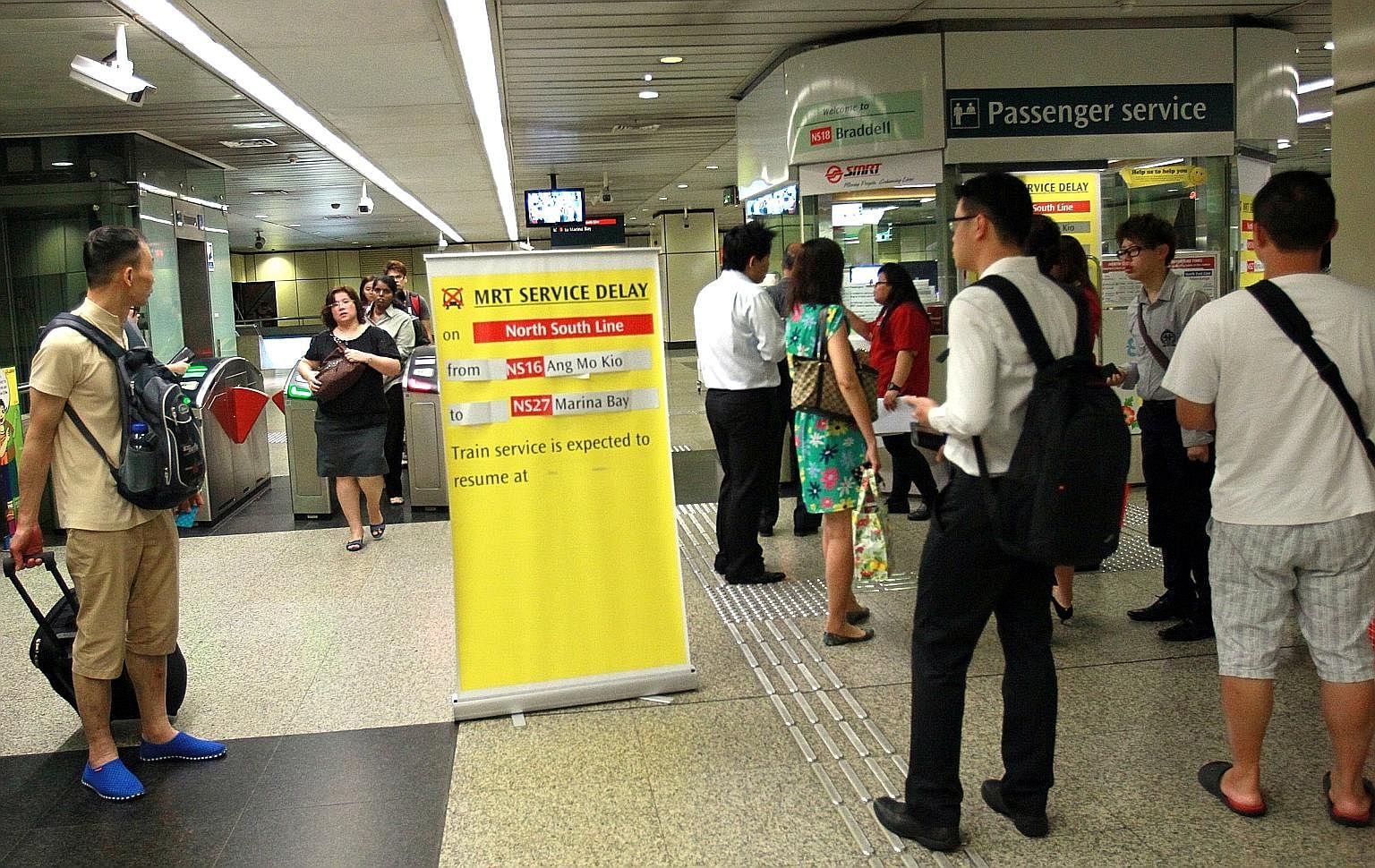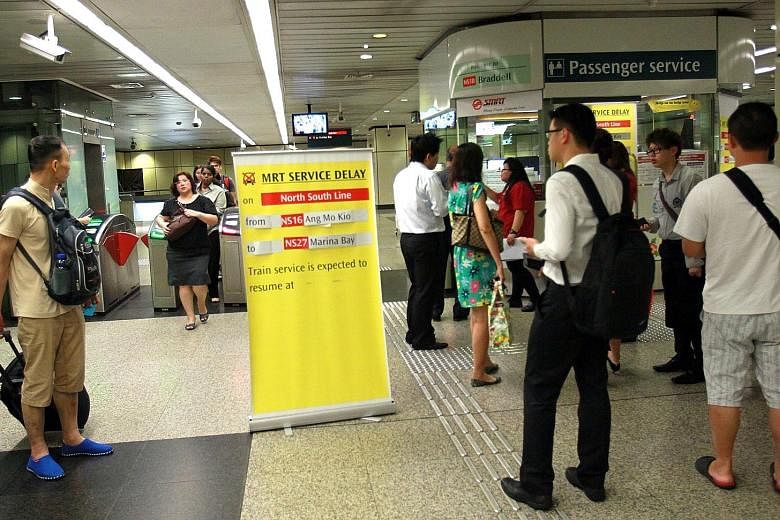Last month in Parliament, Transport Minister Khaw Boon Wan declared a bold target for Singapore's rail system.
He wanted operators to slash the number of disruptions by 50 per cent - from an average of one for every 133,000 train-km clocked last year to one for every 200,000 train-km - by the end of the year.
But, even at 200,000 train-km, Mr Khaw acknowledged that Singapore would still be "way below" Hong Kong's MTR, which was reported to have registered 300,000 train-km before a delay.
"We want to catch up with Hong Kong, and we will," he announced, repeating a goal he has mentioned a few times since assuming the transport portfolio about seven months ago.
The problem is, the goal post has moved. Hong Kong's 300,000 train-km was for the first half of 2014. For full-year 2014, the equivalent figure was about 450,000 train-km.
And, based on statistics released recently by the MTR, it slipped back to 360,000 train-km last year, and bounced back to 520,000 train-km in the first-quarter of this year.

Singapore's Land Transport Authority has not released first-quarter rail system reliability figures yet, but, assuming Mr Khaw's goal of 200,000 train-km was achieved, it would still be less than half of where Hong Kong's is.
If we consider that Hong Kong's network is longer and older than Singapore's, and that it carries significantly more people, we will be able to appreciate the comparison more fully.
The figures cited are for disruptions of more than five minutes. But, for major breakdowns of more than half an hour each - the ones which cause the most inconvenience to commuters - Hong Kong is even further ahead than us.
In 2014, the MTR had 12 major incidents which were not caused by external factors (for instance, passengers getting their feet stuck in platform gaps). Of the 12, three were on its light rail system.
Last year, it brought this number down to eight - seven in the heavy rail system and one in the light rail network.
Singapore's network had 14 major breakdowns - 10 in the MRT and four in the LRT - in 2014.
Last year, the performance deteriorated, with 14 major incidents on the MRT (including the July 7 crippling of the North-South, East-West Lines), and 15 recorded on the LRT.
So, in total, Singapore had 29 major rail disruptions - 3.6 times that of Hong Kong's older, longer and more heavily-laden system .
Now, it is equally important to note that the major breakdown statistics in Hong Kong include the West Rail Line and East Rail Line (including the Ma On Shan Line).
The mean distance between breakdowns for these lines was not included in the comparison because they are regional lines, with longer distances between stations.
But, if they were tallied, these lines clock as much as 900,000 train-km per disruption.
It would not be comparing apples to apples, though. And it is crucial to compare apples to apples when setting targets. So to reiterate, the 300,000 train-km figure is a tad outdated, even if it is already rosier than Singapore's.
The figure to aim for now is 520,000 train-km.
As for major breakdowns, Singapore needs to halve its 2015 figure, and then halve it again to match Hong Kong.
In fact, the MTR is so impressive that several cities pay it to run their trains.
There are other learning points from the MTR, such as compensating commuters who have been inconvenienced by a breakdown.
On top of not charging affected passengers (by opening ticket gates), the MTR offers a 10 per cent discount on fares on the day of a big breakdown - to all passengers.
The MTR also has shuttle buses to mitigate the impact of a breakdown, but, as commuters anywhere well know, no number of buses will ever be enough in a major rail incident.
But at least, in Hong Kong, the rail network is denser, and there are a myriad of other transport options (besides Uber) to help in a breakdown.
Nevertheless, the public gives the MTR hell whenever a breakdown happens. The press also goes to town, pressuring the government each time.
So much so that in March 2014, Secretary for Transport and Housing Professor Anthony Cheung Bing-leung said the government would consider tying the salary of top management at MTR to the number of breakdowns. Should SMRT do likewise? That's something for its board of directors and major shareholder Temasek to decide.
Meanwhile, there are more valuable lessons Singapore can learn from Hong Kong.
One reason the MTR can run the system better is that the designer, builder and operator are one and the same party.
So, their interests are all aligned. The designer knows that a poor design will be hard to build, and the builder knows that a poorly built system will be that much harder to operate and maintain.
This is something Mr Khaw has alluded to. At a forum last December, he said that the LTA should be ready to take on rail operations.
Another pertinent difference between the history of the MTR and Singapore's MRT is the pace of ridership growth.
The MTR's passenger numbers grew by 30 per cent from 2008 to 2015, but Singapore's rail ridership rose by 40 per cent in the same period (excluding another 30 per cent growth from new lines).
All things being equal, the MTR would probably find it a tad more challenging to maintain its reliability record if it had to cope with Singapore's ridership growth surge.
Here the lesson is, of course, to keep a closer watch on population growth, and to ensure that infrastructural and systemic expansion keeps pace.
By the same token, Singapore may well have to tone down its "car-lite" rhetoric until after its rail woes are fixed.
Because the last thing it wants is to push more people onto a system that is already feeling the strain of the current load.


